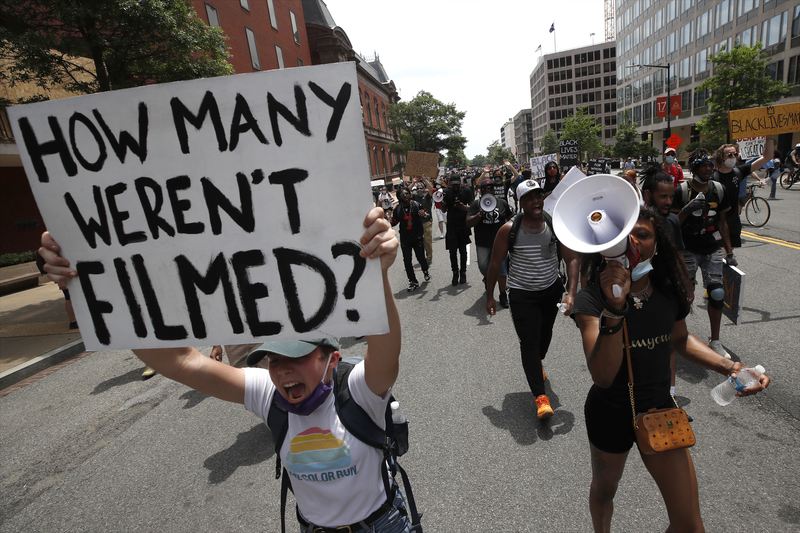From George Floyd, “Defund the Police” and other more recent events, the surge in negative police stories has shifted the public perception of law enforcement within our country. But how does that image compare to reality? What are the actual numbers behind the history of police violence at both the national and local levels?
Greg Giltner, who has served in law enforcement since 1988 and currently serves as Chief of Campus Police for Oklahoma Christian University, explains his stance on the matter.
“A lot of people bring up the George Floyd incident, Michael Brown; you got a lot of stuff in the past,” Giltner said. “I will never condone what a police officer did at another agency. I’m not an armchair quarterback. But I’m pretty safe in saying this: if the public complies to our requests we don’t just senselessly shoot them, we don’t just beat them up.”
However, police violence is trending upward, according to a study published in 2021 and produced by The Lancet, a longstanding medical journal. The study estimates a total of 32,000 deaths from police violence from 1980 to 2019 and that, at the national level, more than 55 percent of these deaths were misclassified or unreported.
The same study also looked at state-level statistics, including the highest mortality rate of police violence, the highest rate of underreported killings and racial discrepancies like the highest rate of police violence against African Americans and more.
Compared to all 50 states from 1980 through 2018, Oklahoma was found to be atop of the three aforementioned statistics.
“It disturbs me that Oklahoma’s in the Bible Belt and we have this title,” Giltner said.
A solution requires both sides to cooperate, according to Giltner.
“Trust and respect are two things that are earned. I think the police department has to earn that as well as the public when we make a traffic stop on a violation,” Giltner said. “Whether it’s somebody speeding or whether it’s somebody that’s been involved in a hit and run, as long as there’s professionalism and respect going both ways, it’ll be without an incident.”
Although he says to have never personally witnessed anyone beaten because of their race, religion, or political view, Giltner commented on developments and steps the police have taken.
The 1985 case of Tennessee v. Garner banned the use of deadly force to prevent the escape of a fleeing suspect. This led to police departments leaning into verbal language and tactics for de-escalating a situation.
“I think overall police departments have come a long way,” Giltner said. “But there still is a percentage of officers out there who are heavy-handed.”
So there is both growth and violence. Is news coverage fair?
“I think they’re fair,” Giltner said. “I don’t think they lie about anything. But I do think they sensationalize it.”
Giltner also commented on positive stories which don’t often see headlines, providing examples from the campus police officers assisting students with fixing a flat or replacing batteries to bikes being donated or an officer pulling over to shoot hoops with kids.
“A lot of times that (officer shooting hoops) may make it on a Tick Tock deal for 10 seconds,” Giltner said. “But an officer reaching through a window and punching somebody because they spit at them? That’s what makes the news.”
An obvious but overlooked notion regarding “police violence” comes from the term itself. Just because the police were involved does not mean they cannot be victims themselves.
“I was with Oklahoma City (Police) in 2014, it was a pretty violent year for us,” Giltner said. “We had 27 officers involved in 18 shootings: five officers shot and a K9 dog killed that year.”
Giltner also referenced two videos he had seen recently, one of two officers from Phoenix shot in a shootout with a suspect and another of a simple traffic stop gone wrong.
“Just watched a video where a police officer is making a routine traffic stop on a guy doing like five miles an hour over the speed limit. (The officer was) shot five times,” Giltner said.
When asked what to do about police brutality and violence, Giltner pointed to education. Specifically, to diversity training and learning how to de-escalate situations, to the public seeing body camera footage and learning from it too.
“… So, I think a lot of it’s just education (and) communication,” Giltner said. “The police department sitting down with city leaders, community leaders, cultural leaders and working these things out.”
When asked if there was anything he wanted to add, this is what Giltner had to say.
“I bleed police blood, but I am also a citizen, a part of this campus, (and) a part of my church community,” Giltner said. “I hate to see students from other cultures, countries, states come here and they’re hesitant to deal with us because of something that’s happened in their country, their city, or their state.”
“My staff here is experienced if they need something,” Giltner said prior to the aforementioned comment.
“So, we do write a few parking tickets, we write a few drinking tickets,” Giltner said. “But the majority of the time we’re out here trying to help keep this a safe campus and that the four years you’re here is a good experience.”
The campus police for Oklahoma Christian University is available 24/7 at 405-425-5500.















Be First to Comment